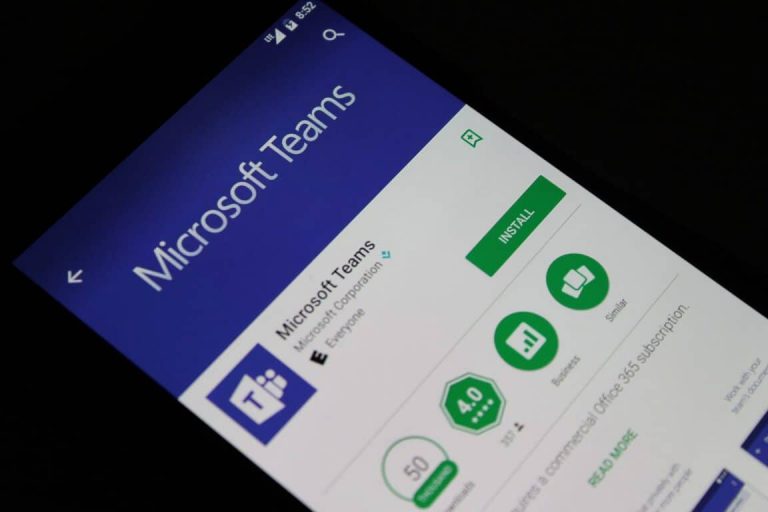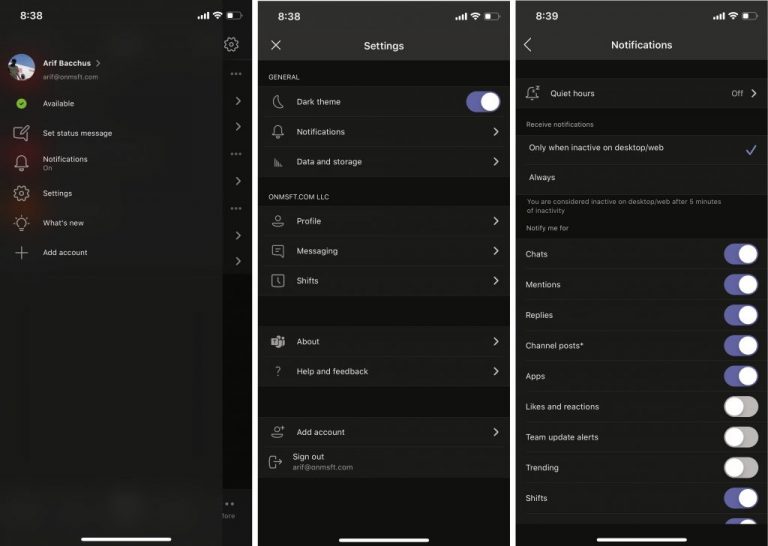Just like Slack, Zoom, and other messaging apps, Microsoft Teams is a cross-platform service. You can enjoy it on macOS, Windows, iOS, and Android, and even the web.
That means there are many ways you can tweak Teams to fit your needs. We’ve already talked about how you can customize your Microsoft Teams experience on desktop, but what about mobile? From dark mode, and more, here are the top 3 ways you can customize Microsoft Teams on iOS and Android.
Tip 1: Use dark mode
There comes a time when you might want to glance quickly at messages, during the day or late at night, without hurting your eyes. Just as on desktop, Microsoft Teams on mobile has a dark mode which helps with this. When enabled, it “turns off the lights” and changes the white spaces around the app to black. This improves readability in many places in Teams on iOS and Android.
You can enable it by tapping the hamburger menu (it looks like three horizontal lines) in the left side of the screen, and then going to Settings. You’ll then see a toggle switch for dark mode at the top. The app will alert you that it needs to restart. Then, the next time you launch it, you’ll have the dark mode. You can always turn it back off by tapping on the switch.
Tip 2: Customize your notifications
Second on our list of customization options are notifications. If you’re not careful, notifications can become an issue for Microsoft Teams. In some cases, even when active on the desktop version of the app, you might end up getting spammed with notifications on iOS and Android versions of the app, too. You might end up getting notified for every single reply, like, or reaction in threads you were a part of.
You can customize your notifications in the Teams mobile app to avoid a mess in your notification center on iOS and Android. To do this, tap the hamburger menu, then choose Settings. After that, choose Notifications. From here, you can turn on quiet hours, which will mute all Teams notifications during the selected time. You also can choose only to receive notifications only when inactive on desktop or web apps. Finally, there are individual toggle switches for different types of notifications, be it chats, mentions, replies, channel posts, and more. There’s a lot you can choose if you’re hoping to clean up your notifications and avoid a mess.
Tip 3: Change how much storage Teams uses
Our last tip will be something that’s important for you if you’re using a phone that doesn’t have a lot of storage. From the Teams settings on iOS or Android, you can change how much storage Microsoft Teams uses. To do this, click the hamburger menu, then choose Settings.
You should then see an option for Data and storage. Be sure to click this. On iOS, you’ll see some options for image upload quality. There are four settings you can choose, which involve compression and saving space on your phone. If you’re on Android, meanwhile, there will some additional options to clean temporary files or reset the app’s database. These are great for situations where you might be running out of space, or where Teams might not be working right.
Check out our coverage for more!
As usual, we’ll end by mentioning that customizing your experience in the Teams app on iOS and Android is just one thing you can do. We’ve extensively covered Microsoft Teams over the past few months, and our news hub is full of other how-tos, news stories, and more. Feel free to check it out, and let us know how you customize Teams by dropping us a comment below.





